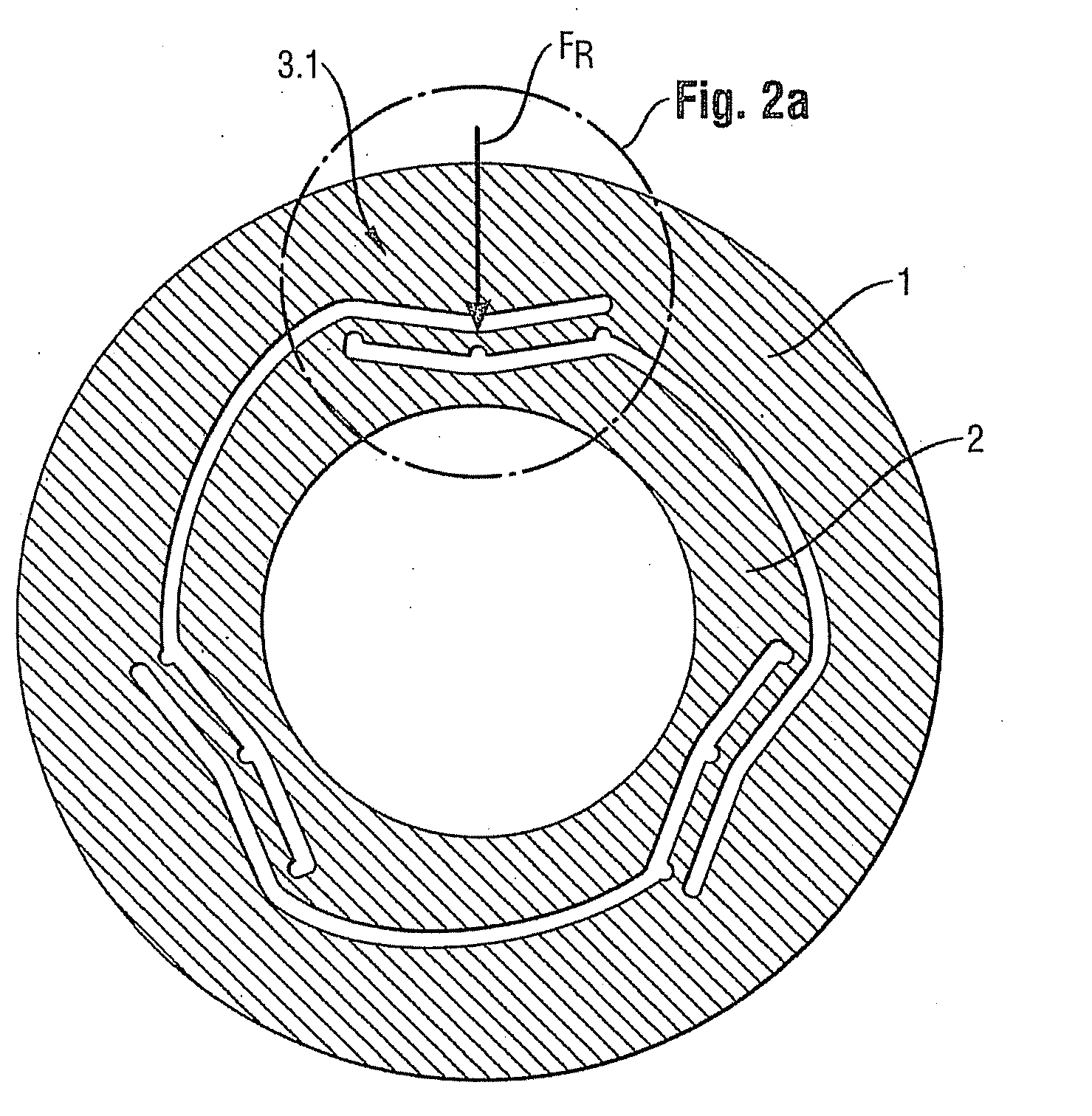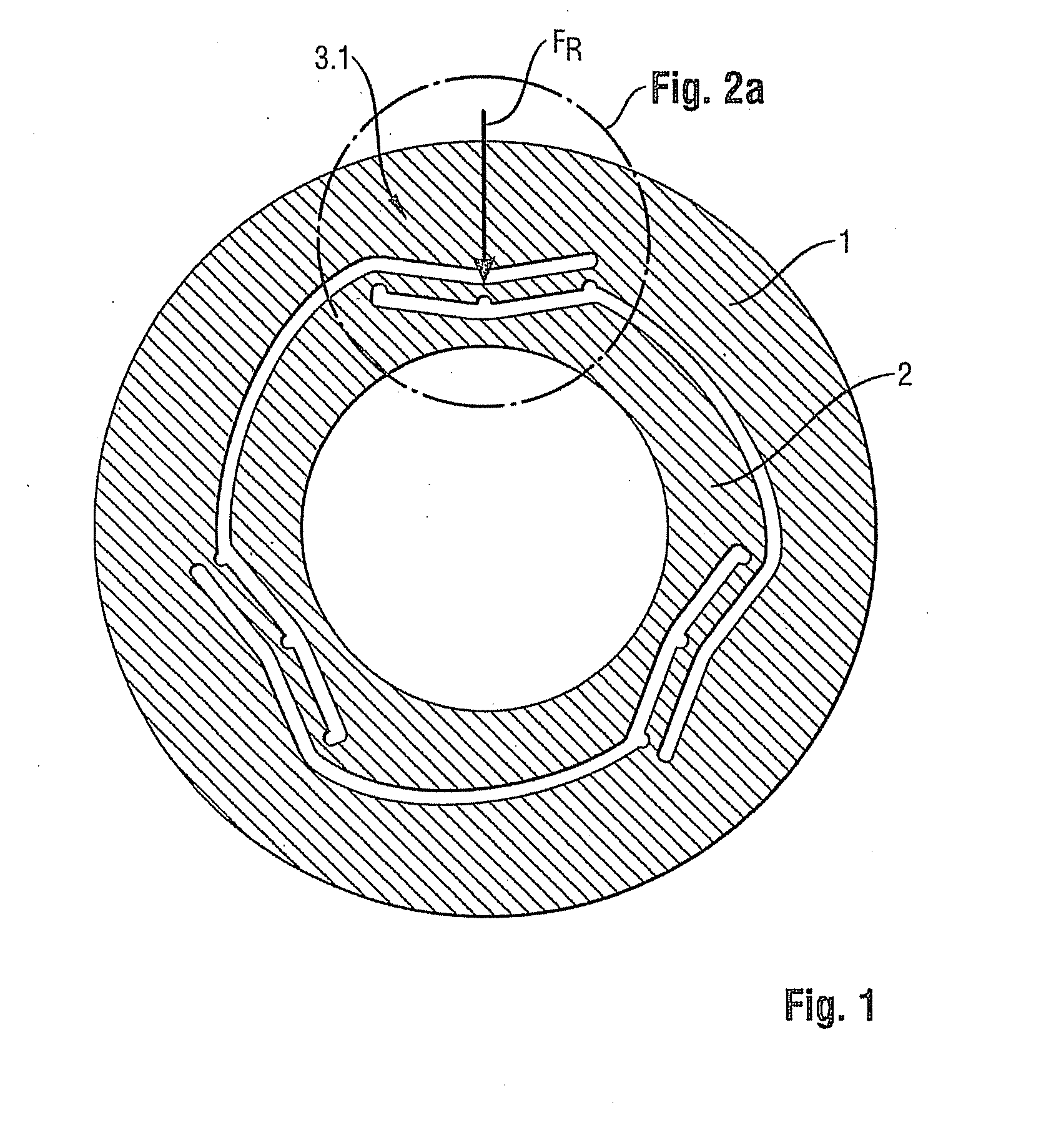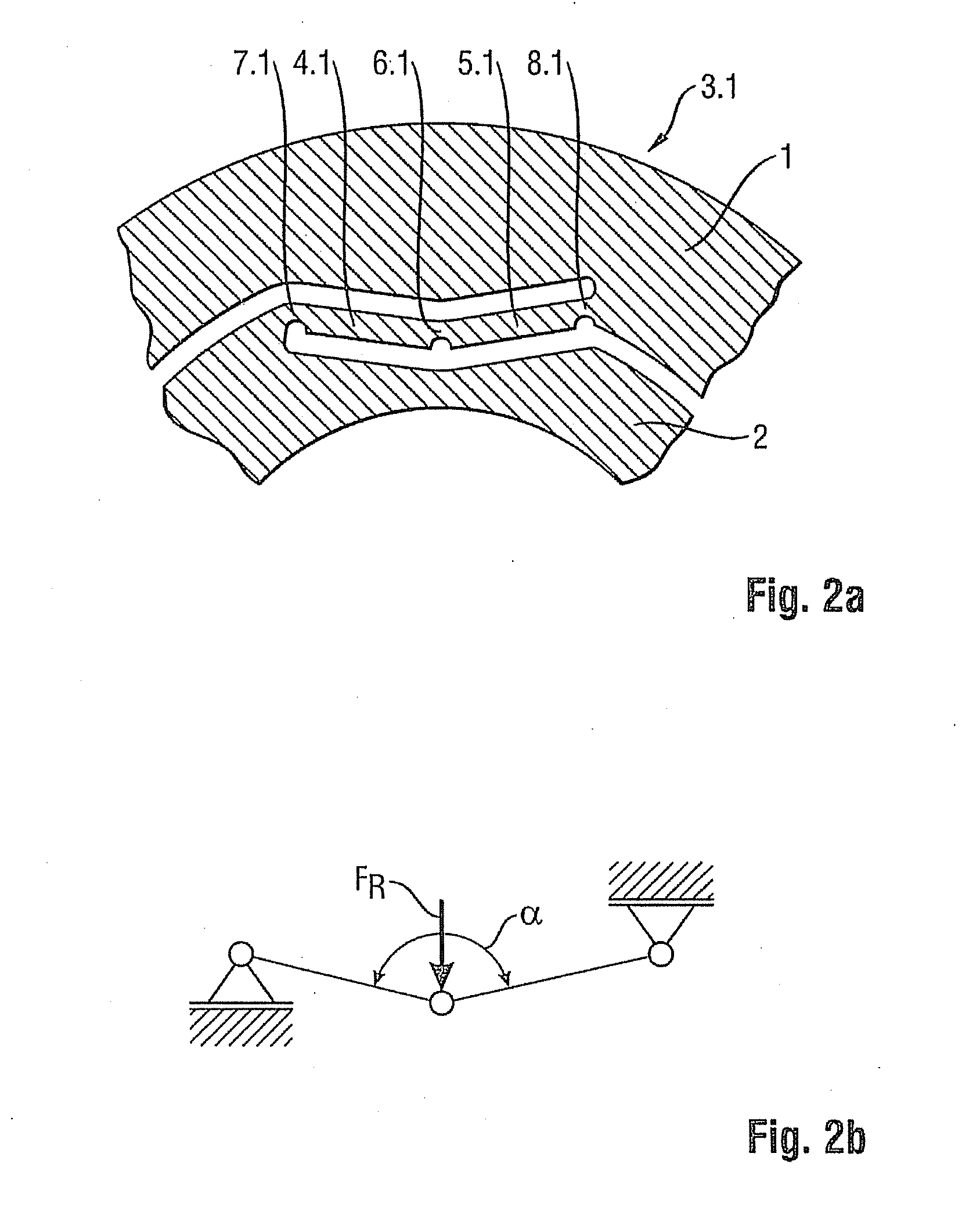Laterally Adjustable Optical Mount with Bent Lever Manipulator Units
a technology of manipulator units and optical mounts, applied in the field of monolithic optical mounts, can solve the problems of increased production costs, system instability, complex and unsymmetrical structure, etc., and achieve the effects of high lateral and axial stiffness, high tension, and high sensitive adjustment of optical elements
- Summary
- Abstract
- Description
- Claims
- Application Information
AI Technical Summary
Benefits of technology
Problems solved by technology
Method used
Image
Examples
first embodiment
[0030]FIG. 1 shows a lens mount with a bent lever manipulator unit 3.1.
[0031]FIGS. 2a, 3a and 4a show sectional views of different embodiments of bent lever manipulator units 3.1, 3.2, 3.3 to better illustrate the different orientations of the cuts in the material.
[0032]FIGS. 2b, 3b and 4b show the force diagrams associated with these units.
[0033]A first embodiment of a bent lever manipulator unit 3.1 which is shown in FIGS. 1, 2a and 2b comprises a bent lever with a first element 4.1 which is connected to a second element 5.1 by way of a bent lever flexure hinge 6.1.
[0034]Within the adjustable range of the bent lever, the first element 4.1 and the second element 5.1, in any position, form a bent angle α smaller than 180°, which angle changes with the adjustable movement, with bent angle α in the context of the present invention always identifying the smaller angle between the first elements 4.1 and the second elements 5.1.
[0035]The other end of the first element 4.1 is connected to...
third embodiment
[0042]In a bent lever manipulator unit 3.3, the connection to the outer mounting ring 1 is not tapered and is therefore not a mechanical element in the sense of a flexure hinge, but is instead a fixed constraint 10.3 for the additional lever 9.3 which is rigidly connected to a second element 5.3.
[0043]The design of a first flexure hinge 7.3, of a bent lever flexure hinge 6.3, and of a first element 4.3, which are comprised in the third embodiment of a bent lever manipulator unit 3.3, is identical to the design of the first flexure hinge 7.2, the bent lever flexure hinge 6.2, and the first element 4.2 of the second embodiment of a bent lever manipulator unit 3.2.
[0044]The mechanisms of action of the three previously explained embodiments of bent lever manipulator units 3 are identical in that each of the bent lever manipulator units 3 when actuated acts as a mechanical element while the other two form a fixed support.
[0045]If, on each first flexure hinge 7 of the fixed supports, one ...
second embodiment
[0067]3.2 Second embodiment of a bent lever manipulator unit
[0068]3.3 Third embodiment of a bent lever manipulator unit
[0069]4.1 First element of a bent lever of a first embodiment of a bent lever manipulator unit 3.1
[0070]4.2 First element of a bent lever of a second embodiment of a bent lever manipulator unit 3.2
[0071]4.3 First element of a bent lever of a third embodiment of a bent lever manipulator unit 3.3
[0072]5.1 Second element of a bent lever of a first embodiment of a bent lever manipulator unit 3.1
[0073]5.2 Second element of a bent lever of a second embodiment of a bent lever manipulator unit 3.2
[0074]5.3 Second element of a bent lever of a third embodiment of a bent lever manipulator unit 3.3
[0075]6.1 Bent lever flexure hinge of a first embodiment of a bent lever manipulator unit 3.1
[0076]6.2 Bent lever flexure hinge of a second embodiment of a bent lever manipulator unit 3.2
[0077]6.3 Bent lever flexure hinge of a third embodiment of a bent lever manipulator unit 3.3
[0078...
PUM
 Login to View More
Login to View More Abstract
Description
Claims
Application Information
 Login to View More
Login to View More - R&D
- Intellectual Property
- Life Sciences
- Materials
- Tech Scout
- Unparalleled Data Quality
- Higher Quality Content
- 60% Fewer Hallucinations
Browse by: Latest US Patents, China's latest patents, Technical Efficacy Thesaurus, Application Domain, Technology Topic, Popular Technical Reports.
© 2025 PatSnap. All rights reserved.Legal|Privacy policy|Modern Slavery Act Transparency Statement|Sitemap|About US| Contact US: help@patsnap.com



